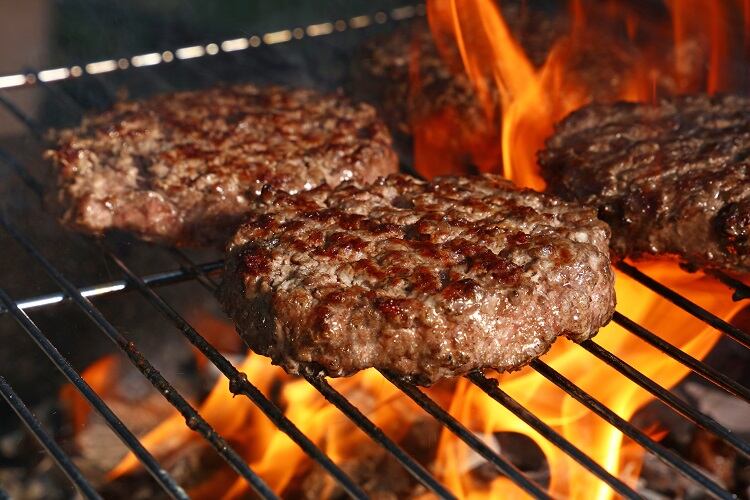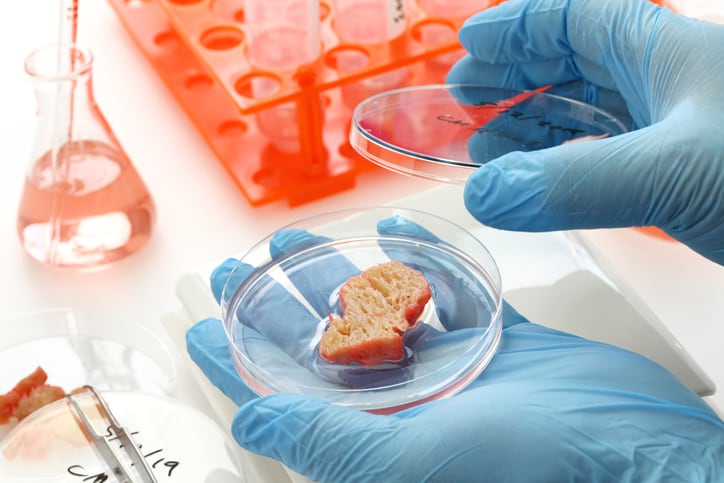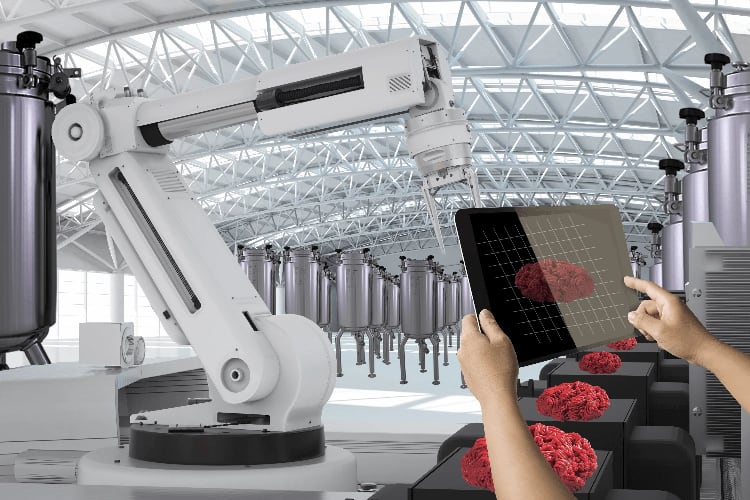The cultured meat sector is making headway. Technological advancements are helping start-ups overcome two of their key challenges: lowering costs and increasing scale. And the world’s first regulatory approval of a cultivated meat product, in Singapore last year, has buoyed hopes for international commercialisation.
However, with aspirations of significantly disrupting the conventional meat industry, the cultivated sector may face a few more hurdles yet. Conventional meat production is well established across the globe, with approximately 70bn animals reared for food each year.
Is there a way the two industries could work together? And in doing so, both diversify meat production and reduce carbon emissions?
‘Farming is not going away’
Eric Jenkusky, CEO and co-founder of Matrix Meats, is convinced that ‘farming is not going away’. Nor does he want it to in its entirety.
Matrix Meats is an Ohio-based start-up developing customisable nanofibre scaffolds for cell-based meat production. “At Matrix, we manufacture our scaffolds from zein, which is a corn protein, soy [protein] from soybeans, and pea protein from peas,” he told The Future of Meat: Cultivated Meat Roundtable Discussion hosted by public relations agency JConnelly.
“We still need and want farmers in Europe, and farmers all over the planet, to be growing these crops.”
At the same time, the CEO suggested the conventional meat industry should be prepared to adjust to ‘changing market conditions’. “The slaughtered meat industry, [trade associations such as] the National Cattlemen’s Beef Association, and every one of us in the business, have to learn to continually adapt to changing market conditions.
“When you do that, and you are innovative and forward-looking, you’re able to adapt…”
Meat industry allies, not opponents
Until now, not much adaption has taken place, indicated Mark Langley, managing partner at alternative protein investor Unovis Asset Management.
The investment firm is currently investing in brands Heura, NovaMeat, and Zero Egg, amongst others.
“We’re producing meat largely the same way we have for the past 10,000 years, only on an industrialised basis. When you move it to more concentrated farms, you are really exploiting the animals to a greater extent, and creating worse externalities…
“These negative externalities are not being paid for by the meat industry,” he stressed, suggesting untaxed emissions could be perceived as a ‘form of subsidy’.
That is not to say that Langley is seeking an ‘us and them’ relationship. “We’d rather have the meat industry come on board as allies, not opponents. There’re ways to do that.”
The managing director offered up examples of cattle farmers transitioning into hemp production, or chicken farmers converting into mushroom farmers. Some fishermen are also converting into seaweed farmers, he added. “Those are some really attractive opportunities to transition this industry towards a better, more sustainable way of life and means for our planet.”
Externality reversal a lost cause?
Concerning the reversal of negative externalities, co-founder of cultivated fat start-up Hoxton Farms, Dr Max Jamilly, appeared unconvinced that much can be done.
Intensive animal agriculture is thought to be responsible for 15% of global greenhouse gas emissions, and use around 35% of habitable land and freshwater.
“There’s nothing that we can do about them really,” the London-based co-founder told delegates. “We would have to reform an entire industry that is centuries old in order to make a dent in those emissions.”
Swapping out conventional meat for cultivated meat and fat, however, does mean fewer emissions, Dr Jamilly stressed.
Climate-friendly production depends on technology, scale, and geography, however ‘credible studies’ are ‘driving home the point’ that the environmental credentials of cultivated meat ‘really are better than the industry that exists as is’.
“One of the things that really sticks with me when comparing environmental practice – cultivated meat to traditional meat – is the amount of control that we have.” Emissions from traditional agriculture are ‘spread over tens of thousands of hectares across every country in the world’. However, emissions associated with cultivated meat – ‘although minimal’ – will occur in a ‘focused area at one or several facilities’, he explained.
This means players can capture the carbon and ‘have a lot more control’ concerning the environmental footprint of inputs in the process. “It’s really better all round.”





